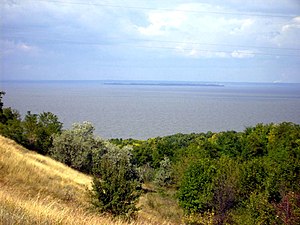| The winner this Translation of the week is
Please be bold and help translate this article!  Luís Gonzaga Pinto da Gama (Salvador, June 21, 1830 – São Paulo, August 24, 1882) was a Brazilian Rábula (self-taught lawyer), abolitionist, orator, journalist and writer, and the Patron of the Abolition of Slavery in Brazil. Born to a free black mother and a white father, he was nevertheless made a slave at the age of 10, and remained illiterate until the age of 17. He judicially won his own freedom and began to work as a lawyer on behalf of the captives, and by the age of 29 he was already an established author and considered "the greatest abolitionist in Brazil". (Please update the interwiki links on Wikidata of your language version of the article after each week's translation is finished so that all languages are linked to each other.)
|
User talk:BP001002004008
| The winner this Translation of the week is
Please be bold and help translate this article!  Great Meadow National Nature Park (Ukrainian: Великий Луг (національний природний парк)) (also, Velykyi Luh) covers historic steppe terrain in southeast Ukraine. It is on the south bank of the Dnieper River's Kakhovka Reservoir, which was created by the Dnieper Hydroelectric Station. The meadows and reed beds on the shore support one of the largest transmigration spots for birds in Eastern Europe (Please update the interwiki links on Wikidata of your language version of the article after each week's translation is finished so that all languages are linked to each other.)
|
| The winner this Translation of the week is
Please be bold and help translate this article!  Phromnia rosea, the flower-spike bug or the flatid leaf bug, is a species of planthopper in the family Flatidae. It is found in dry, tropical forests in Madagascar, and the adult insects are gregarious, the groups orienting themselves in such a way that they resemble a flower spike (Please update the interwiki links on Wikidata of your language version of the article after each week's translation is finished so that all languages are linked to each other.)
|
| The winner this Translation of the week is
Please be bold and help translate this article!  The composition of Madagascar's wildlife reflects the fact that the island has been isolated for about 88 million years. The prehistoric breakup of the supercontinent Gondwana separated the Madagascar-Antarctica-India landmass from the Africa-South America landmass around 135 million years ago. Madagascar later split from India about 88 million years ago, allowing plants and animals on the island to evolve in relative isolation. As a result of the island's long isolation from neighboring continents, Madagascar is home to an abundance of plants and animals found nowhere else on Earth. Approximately 90 percent of all plant and animal species found in Madagascar are endemic, including the lemurs (a type of strepsirrhine primate), the carnivorous fossa and many birds. This distinctive ecology has led some ecologists to refer to Madagascar as the "eighth continent", and the island has been classified by Conservation International as a biodiversity hotspot. As recent as 2021, the "smallest reptile on earth" was also found in Madagascar, known as the Brookesia nana, or nano-chameleon. (Please update the interwiki links on Wikidata of your language version of the article after each week's translation is finished so that all languages are linked to each other.)
|
| The winner this Translation of the week is
Please be bold and help translate this article!  William Morrison (23 August 1855 – 29 August 1927) was a Scottish chemist. His background in chemistry piqued his interest in improving storage batteries. He concentrated on how to produce the most available energy for a unit of weight for efficiency in the working of an individual battery cell. Eventually, he developed storage batteries far more powerful than what had then been available. To demonstrate his batteries, Morrison installed 24 of them on a common horse-drawn carriage and attached an electric motor to the rear axle to be powered by them. Through various innovations, he developed the controls for the power used and the vehicle's steering so that the driver had complete control. Morrison invented the first practical self-powered four-wheeled electric carriage in the United States. His electric vehicle was the first to be driven in Chicago and in his hometown of Des Moines, Iowa. This electric horseless buggy of the late 19th century helped pave the way for the hybrid electric automobile of the 21st century. (Please update the interwiki links on Wikidata of your language version of the article after each week's translation is finished so that all languages are linked to each other.)
|
| The winner this Translation of the week is
Please be bold and help translate this article!  The Casa Grande del Pueblo (English: Great House of the People), is the Bolivian presidential residence that replaced the Palacio Quemado in 2018. Inaugurated on 9 August 2018 during the presidency of Evo Morales as the official residence of the President of Bolivia, the interim government of Jeanine Áñez reverted to occupying the Palacio Quemado from 2019 to 2020. Following the inauguration of Luis Arce on 8 November 2020, it has again become the residence of the president. (Please update the interwiki links on Wikidata of your language version of the article after each week's translation is finished so that all languages are linked to each other.)
|
| The winner this Translation of the week is
Please be bold and help translate this article!  The Netto Question (Portuguese: Questão Netto) was the largest collective action for the liberation of slaves in the Americas. The lawsuit is related to the liberation of 217 slaves in Brazilian lands in the 1870s. (Please update the interwiki links on Wikidata of your language version of the article after each week's translation is finished so that all languages are linked to each other.)
|
